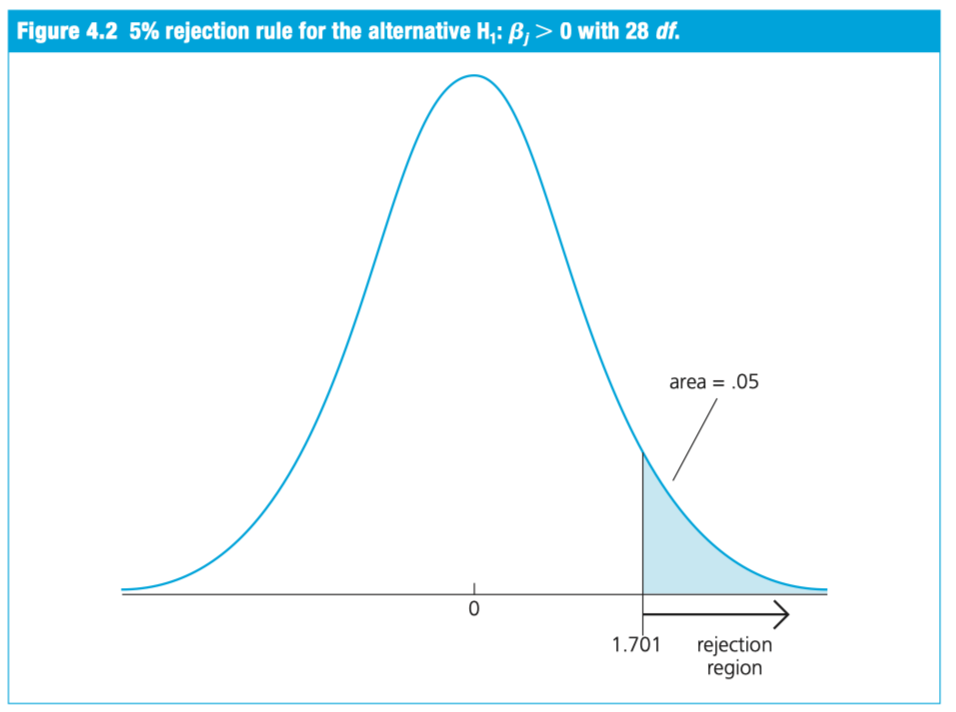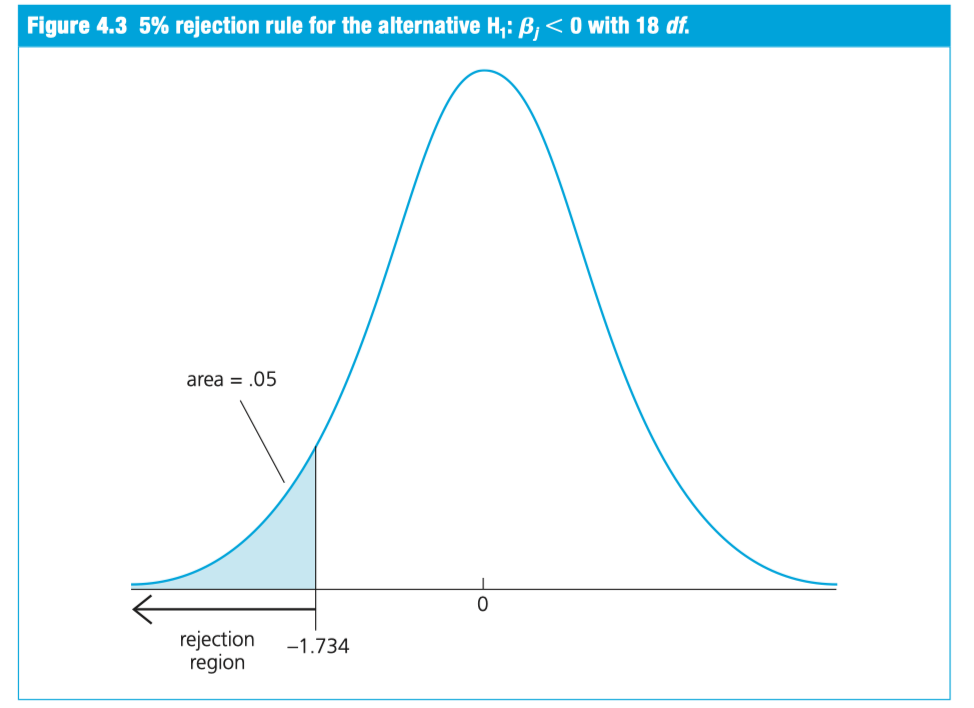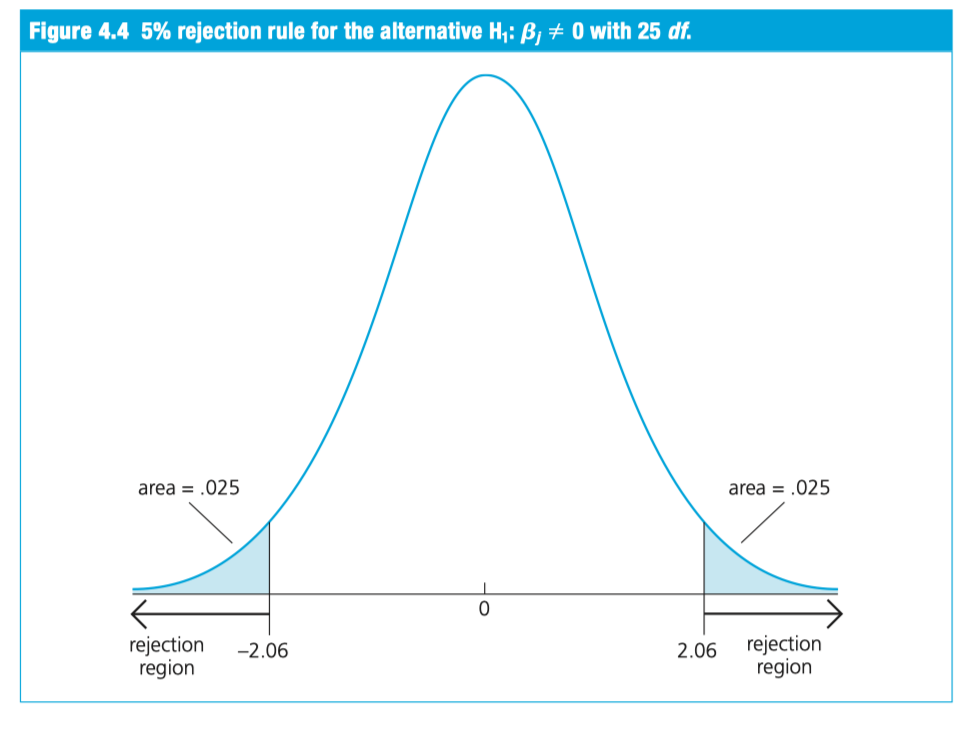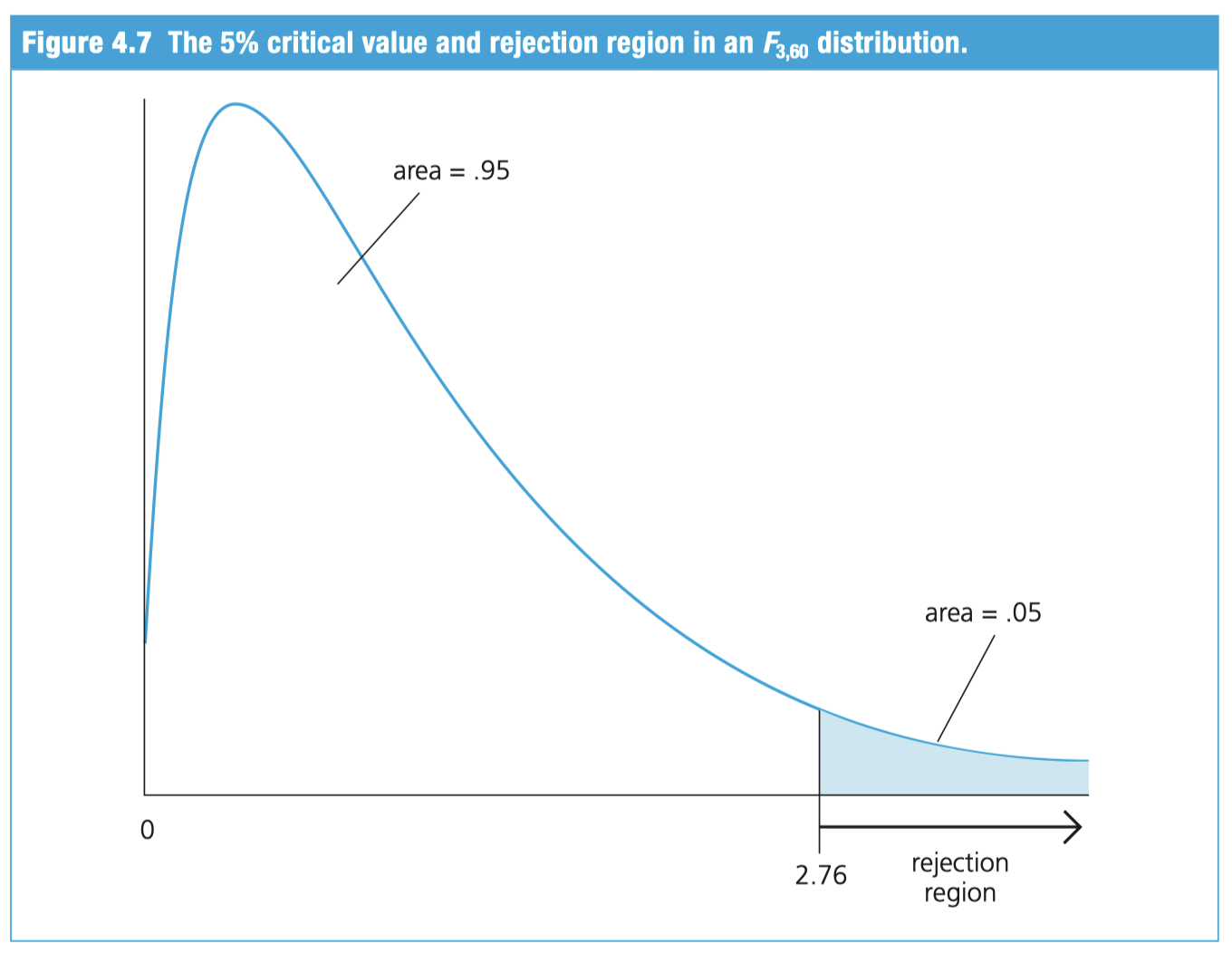library(wooldridge)
wage_data <- wage1
reg1 <- lm(log(wage) ~ educ + exper + tenure, data = wage_data)
summary(reg1)
Call:
lm(formula = log(wage) ~ educ + exper + tenure, data = wage_data)
Residuals:
Min 1Q Median 3Q Max
-2.05802 -0.29645 -0.03265 0.28788 1.42809
Coefficients:
Estimate Std. Error t value Pr(>|t|)
(Intercept) 0.284360 0.104190 2.729 0.00656 **
educ 0.092029 0.007330 12.555 < 2e-16 ***
exper 0.004121 0.001723 2.391 0.01714 *
tenure 0.022067 0.003094 7.133 3.29e-12 ***
---
Signif. codes: 0 '***' 0.001 '**' 0.01 '*' 0.05 '.' 0.1 ' ' 1
Residual standard error: 0.4409 on 522 degrees of freedom
Multiple R-squared: 0.316, Adjusted R-squared: 0.3121
F-statistic: 80.39 on 3 and 522 DF, p-value: < 2.2e-16


